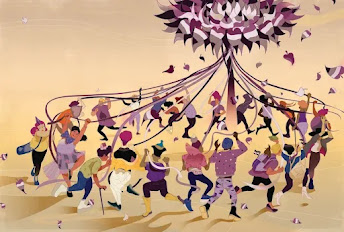New research on asexuality shows why it’s so important for doctors and therapists to distinguish between episodes of low libido and a consistent lack of sexual attraction
By Allison Parshall
In graduate school people often asked Megan Carroll whether she was gay. Her sociology dissertation was on inequalities within communities of gay fathers, so her research participants were curious about how she identified. “I would say, ‘Oh, I'm maybe mostly straight? I don't really know. It's complicated.’”
It was, at the time, the closest she could get to the truth. She'd had crushes on both boys and girls in high school and had been in a relationship with a man; being around her romantic interests sent her heart fluttering in her chest. But nothing like that happened when she considered having sex with any of them—she simply wasn't interested. Her friends assured her she just needed to meet the right person, someone who would light her fire.
When that hadn't happened by the time she was 18, Carroll thought she might simply have a low libido and went looking for an explanation. Thinking her birth control might be to blame, she spoke with a nurse, who suggested that perhaps her boyfriend was “just a bad lover.” Then Carroll wondered whether it was the pills she was taking to treat her depression. Over the next 12 years she visited multiple therapists, psychiatrists and physicians and tried different antidepressants—including a less commonly prescribed drug that gave her tachycardia, or a faster heart rate. Eventually she settled on one that had shown no measurable effect on sex drive in clinical trials.
Throughout these years of experimentation, Carroll's libido—the physiological desire for sexual stimulation and release—did fluctuate. But what remained constant was that her libido was rarely, if ever, directed at another person, even her crushes.
In 2016 Carroll stumbled on a Facebook post about asexuality. She'd heard the term, typically defined as experiencing little to no sexual attraction, but had never felt that it applied to her. Then Carroll read a comment that mentioned demisexuality, a specific experience of feeling sexual attraction only after developing an emotional bond with someone. The idea that asexuality was a spectrum opened an entire world that had never been discussed in her gender and sexuality courses—one in which sexual desire was not necessary for a fulfilling life.
Because this idea subverts a cultural assumption about what it means to be human, it is often difficult for asexual people to recognize, let alone embrace, their identity. “Your very existence is, in some way, in opposition” to the societal norm, says CJ Chasin, an asexual gender and sexuality scholar at the University of Windsor in Canada. Even after realizing she probably was asexual, Carroll still visited doctors to experiment with her medications before finally accepting that she just is the way she is.
Over the past two decades psychological studies have shown that asexuality should be classified not as a disorder but as a stable sexual orientation akin to homosexuality or heterosexuality. Both cultural awareness and clinical medicine have been slow to catch on. It's only recently that academic researchers have begun to look at asexuality not as an indicator of health problems but as a legitimate, underexplored way of being human.
In biology, the word “asexual” typically gets used in reference to species that reproduce without sex, such as bacteria and aphids. But in some species that do require mating to have offspring, such as sheep and rodents, scientists have observed individuals that don't appear driven to engage in the act.
This behavior is more analogous to human asexuality, a concept rarely mentioned in medical literature until recently. In a pamphlet published in 1896, pioneering German sexologist Magnus Hirschfeld described people without sexual desire, a state he called “anesthesia sexualis.” In 1907 Reverend Carl Schlegel, an early gay rights activist, advocated for the “same laws” for “the homosexuals, heterosexuals, bisexuals [and] asexuals.” When sexologist Alfred Kinsey devised his scale of sexual orientation in the 1940s, he created a “Category X” for the respondents who unexpectedly reported no sociosexual contacts or reactions—exceptions from his model whom he estimated made up 1.5 percent of all males between the ages of 16 and 55 in the U.S. Asexuality was largely absent from scientific research over the subsequent decades, although it was occasionally referenced by activists and scholars in the gay liberation movement. -Scientific America

No comments:
Post a Comment